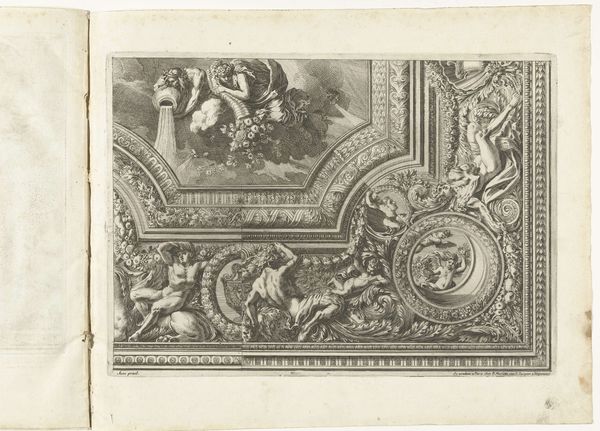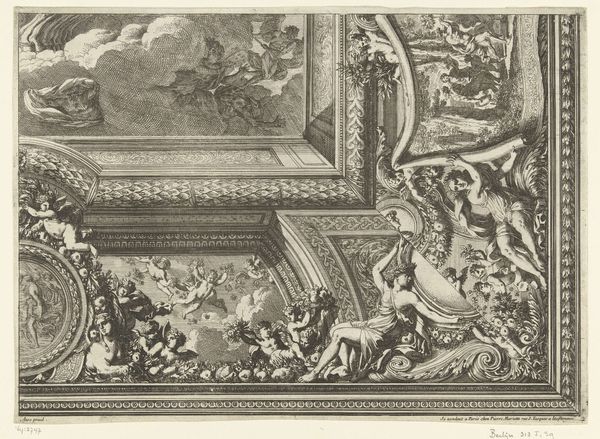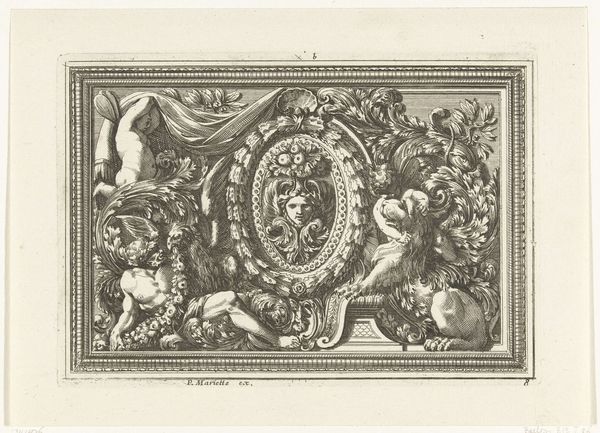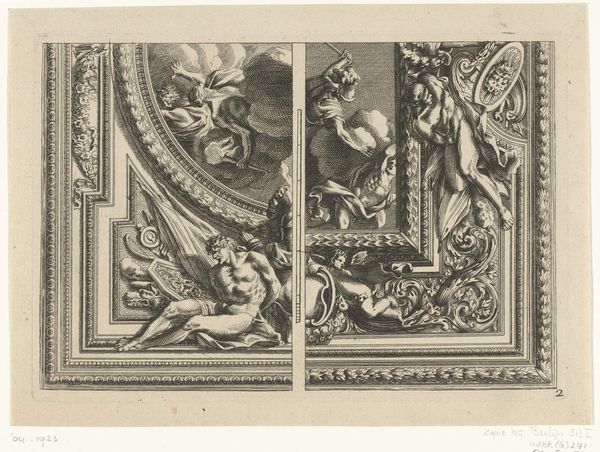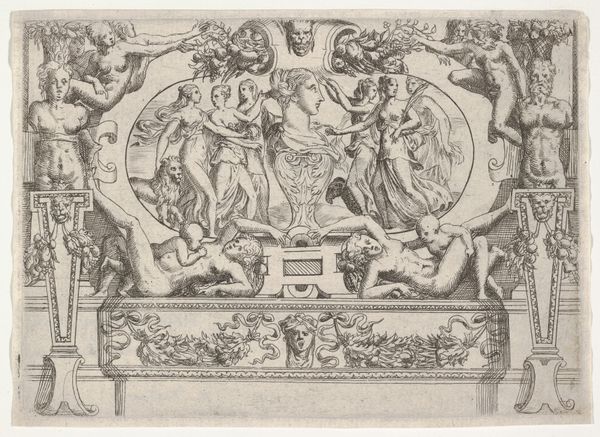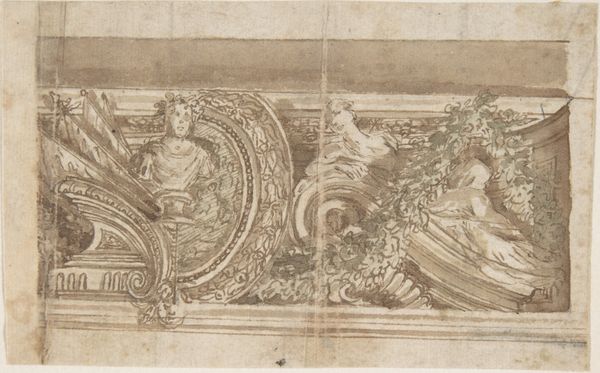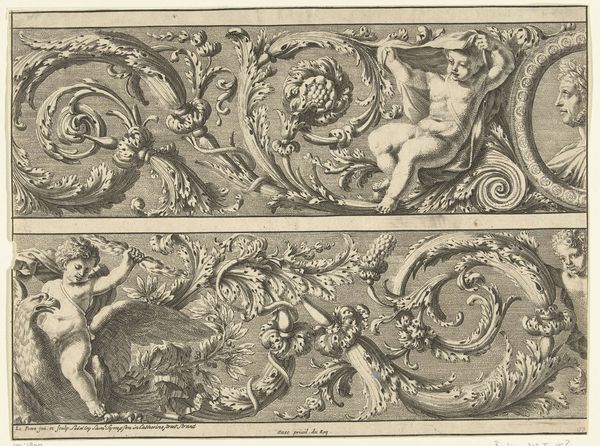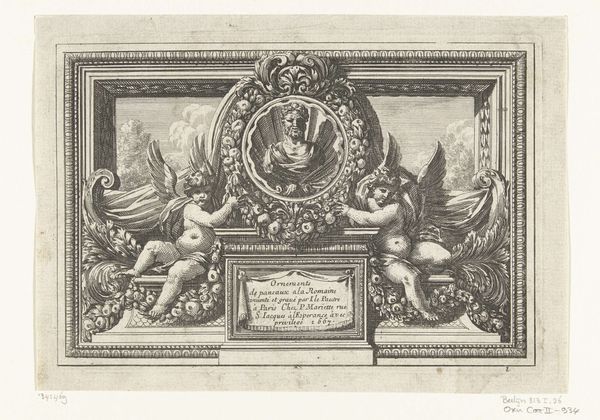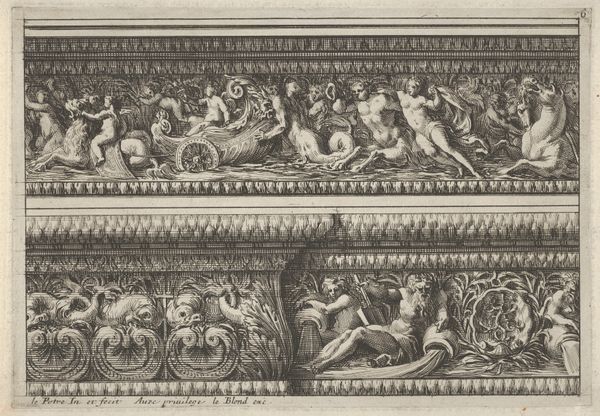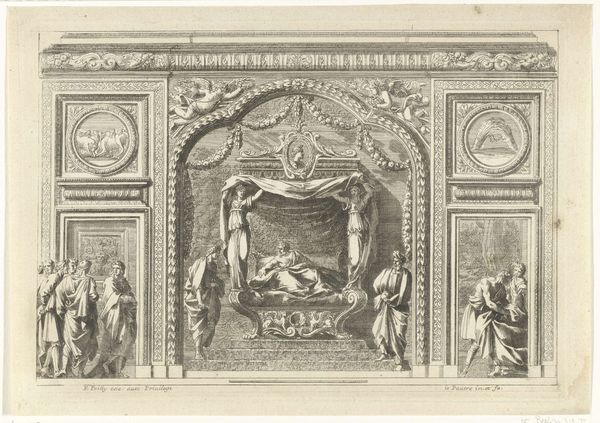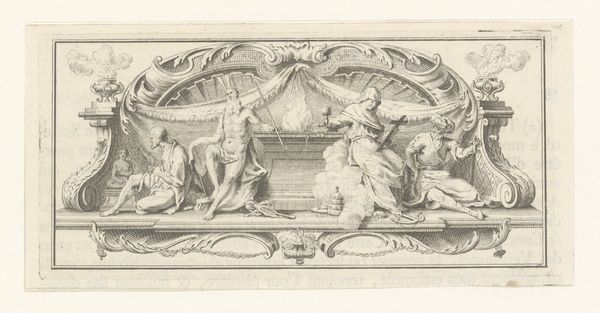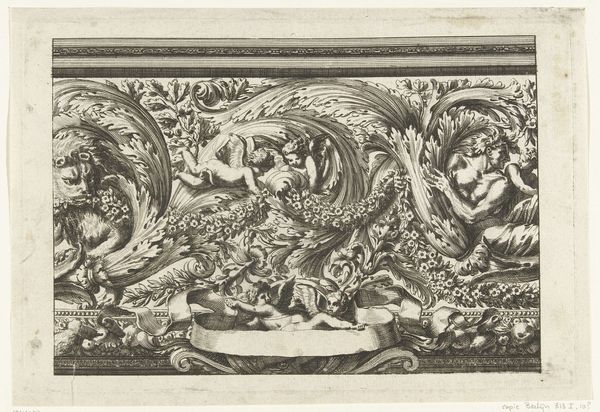
drawing, fresco, ink, engraving
#
drawing
#
baroque
#
pen drawing
#
fresco
#
ink line art
#
ink
#
line
#
pen work
#
decorative-art
#
engraving
Dimensions: height 224 mm, width 296 mm
Copyright: Rijks Museum: Open Domain
This print of two friezes with foliage by Jean Lepautre, dating back to the 17th century, presents us with a fascinating array of symbols. Leafy tendrils intertwine with figures drawn from classical antiquity. The upper frieze features cherubs alongside a seated, naked man who appears to be a satyr, a sylvan deity; further along, we observe the proud figure of a lion. The lower frieze shows an ornate coat-of-arms, a musical instrument, and a human face. Note the foliage. The motifs of intertwining leaves and vines is found throughout the history of art, from ancient Greek architecture to Renaissance painting. This motif symbolizes growth, fertility, and the cyclical nature of life. These patterns speak to a deeply rooted human fascination with nature's regenerative power. The same creative impulse can be seen in Islamic art and architecture, where vegetal patterns are used to decorate mosques and palaces, evoking paradise. This human impulse transcends eras, continuously resurfacing and evolving, a testament to its lasting power.
Comments
No comments
Be the first to comment and join the conversation on the ultimate creative platform.
